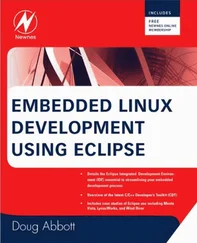It is NOT protable (uses 386 task switching etc), and it probably never
will support anything other than AT-harddisks, as that's all I have :-(.
Since that initial release, Linux has matured into a full-featured operating system with robustness, reliability, and high-end features that rival those of the best commercial operating systems. By some estimates, more than half of the Internet servers on the Web are powered by Linux servers. It is no secret that the online search giant Google uses a large collection of low-cost PCs running a fault-tolerant version of Linux to implement its popular search engine.
You can obtain the source code for a Linux kernel and complementary components in numerous places. Your local bookstore might have several versions as companion CD-ROMs in books about Linux. You also can download the kernel itself or even complete Linux distributions from numerous locations on the Internet. The official home for the Linux kernel is found at www.kernel.org. You will often hear the terms mainline source or mainline kernel referring to the source trees found at kernel.org.
As this book is being written, Linux Version 2.6 is the current version. Early in the development cycle, the developers chose a numbering system designed to differentiate between kernel source trees intended for development and experimentation and source trees intended to be stable, production-ready kernels. The numbering scheme contains a major version number, a minor version number, and then a sequence number. Before Linux Version 2.6, if the minor version number is even, it denotes a production kernel; if it is odd, it denotes a development kernel. For example:
• Linux 2.4. x Production kernel
• Linux 2.5. x Experimental (development)
• Linux 2.6. x Production kernel
Currently, there is no separate development branch of the Linux 2.6 kernel. All new features, enhancements, and bug fixes are funneled through a series of gatekeepers who ultimately filter and push changes up to the top-level Linux source trees maintained by Andrew Morton and Linus Torvalds.
It is easy to tell what kernel version you are working with. The first few lines of the top-level makefile [25] We talk about the kernel build system and makefiles shortly.
in a kernel source tree detail the exact kernel version represented by a given instance. It looks like this for the 2.6.14 production kernel:
VERSION = 2
PATCHLEVEL = 6
SUBLEVEL = 14
EXTRAVERSION =
NAME=Affluent Albatross
Later in the same makefile, these macros are used to form a version-level macro, like this:
KERNELRELEASE=$(VERSION).$(PATCHLEVEL).$(SUBLEVEL)$(EXTRAVERSION)
This macro is used in several places in the kernel source tree to indicate the kernel version. In fact, version information is used with sufficient frequency that the kernel developers have dedicated a set of macros derived from the version macros in the makefile. These macros are found in …/include/linux/version.h [26] Throughout this book, three dots preceding any path are used to indicate whatever path it might take on your system to reach the top-level Linux source tree.
[2] Prentice Hall Open Source Software Development Series Arnold Series Editor Robbins "Real world code from real world applications" Open Source technology has revolutionized the computing world. Many large-scale projects are in production use worldwide, such as Apache, MySQL, and Postgres, with programmers writing applications in a variety of languages including Perl, Python, and PHP. These technologies are in use on many different systems, ranging from proprietary systems, to Linux systems, to traditional UNIX systems, to mainframes. The Prentice Hall Open Source Software Development Series is designed to bring you the best of these Open Source technologies. Not only will you learn how to use them for your projects, but you will learn from them. By seeing real code from real applications, you will learn the best practices of Open Source developers the world over. Titles currently in the series include: Linux ® Debugging and Performance Tuning: Tips and Techniques Steve Best 0131492470, Paper, ©2006 Understanding AJAX: Using JavaScript to Create Rich Internet Applications Joshua Eichorn 0132216353, Paper, ©2007 Embedded Linux Primer Christopher Hallinan 0131679848, Paper, ©2007 SELinux by Example Frank Mayer, David Caplan, Karl MacMillan 0131963694, Paper, ©2007 UNIX to Linux ® Porting Alfredo Mendoza, Chakarat Skawratananond, Artis Walker 0131871099, Paper, ©2006 Linux Programming by Example: The Fundamentals Arnold Robbins 0131429647, Paper, ©2004 The Linux ® Kernel Primer: A Top-Down Approach for x86 and PowerPC Architectures Claudia Salzberg, Gordon Fischer, Steven Smolski 0131181637, Paper, ©2006
in the Linux kernel source tree. They are reproduced here as Listing 4-1.
Listing 4-1. Kernel include File:…/include/linux/version.h
#define UTS_RELEASE "2.6.14"
#define LINUX_VERSION_CODE 132622
#define KERNEL_VERSION(a,b,c) (((a) << 16) + ((b) << 8) + (c))
You can check the kernel version from a command prompt on a running Linux system like this:
$ cat /proc/version
Linux version 2.6.13 (chris@pluto) (gcc version 4.0.0 (DENX ELDK 4.0 4.0.0)) #2
Thu Feb 16 19:30:13 EST 2006
One final note about kernel versions: You can make it easy to keep track of the kernel version in your own kernel project by customizing the EXtrAVERSION field.
For example, if you were developing enhancements for some new kernel feature, you might set EXtrAVERSION to something like this:
EXTRAVERSION=-foo
Later, when you use cat /proc/version, you would see Linux version 2.6.13-foo, and this would help you distinguish between development versions of your own kernel.
4.1.2. Kernel Source Repositories
The official home for the kernel source code is www.kernel.org. There you can find both current and historical versions of the Linux kernel, as well as numerous patches. The primary FTP repository found at ftp.kernel.org contains subdirectories going all the way back to Linux Version 1.0. This site is the primary focus for the ongoing development activities within the Linux kernel.
If you download a recent Linux kernel from kernel.org, you will find files in the source tree for 25 different architectures and subarchitectures. Several other development trees support the major architectures. One of the reasons is simply the sheer volume of developers and changes to the kernel. If every developer on every architecture submitted patches to kernel.org, the maintainers would be inundated with changes and patch management, and would never get to do any feature development. As anyone involved with kernel development will tell you, it's already very busy!
Several other public source trees exist outside the mainline kernel.org source, mostly for architecture-specific development. For example, a developer working on the MIPS architecture might find a suitable kernel at www.linux-mips.org. Normally, work done in an architecture tree is eventually submitted to the kernel.org kernel. Most architecture developers try to sync up to the mainline kernel often, to keep up with new developments whenever possible. However, it is not always straightforward to get one's patches included in the mainline kernel, and there will always be a lag. Indeed, differences in the architecture kernel trees exist at any given point in time.
Читать дальше












